
Fertilizer does not need to be the high-tech, complicated thing that synthetic fertilizer brands would have you believe.
Real talk: the very best fertilizer is the kind you make yourself, using simple food stuffs you can find in your pantry, garbage can or yard.
This article will walk you through how to turn your kitchen scraps and your pantry extras into an incredible long-lasting fertilizer for your plants (potted, or otherwise).
Note: Wanna become an epic gardener? Check out our friend Kevin at Epic Gardening for some phenomenal knowledge, inspiration and epic gardening tips!
Chapter One: Why NPK Is NTK (Need-To-Know)
Even if you’re just a beginner gardener, you’ve probably heard of the abbreviation NPK held up as a holy relic by veteran green-thumbs.
NPK stands for Nitrogen, Phosphorus and Potassium. While your garden requires a host of micronutrients to thrive, these three are the most important macronutrients to ensure a healthy and bountiful garden.
When you’re looking at an NPK ratio (which would appear on a bag of synthetic or organic fertilizer as something in the realm of 16-5-5) it essentially means the ratio of Nitrogen to Phosphorus to Potassium. In 16-5-5 example, that means that there are 16 pounds of nitrogen, 5 pounds of phosphorus and 5 pounds of potassium.
Nitrogen is most useful for increasing plant yield and speeding plant growth.
Phosphorus is beneficial for “bulking up” plants, such as fruit and flower growth, and creating bushy leaves and sturdy roots.
Potassium is an all-around soil conditioner, helping your plants retain water, resist pests and disease, and produce the necessary proteins for growth.
1.
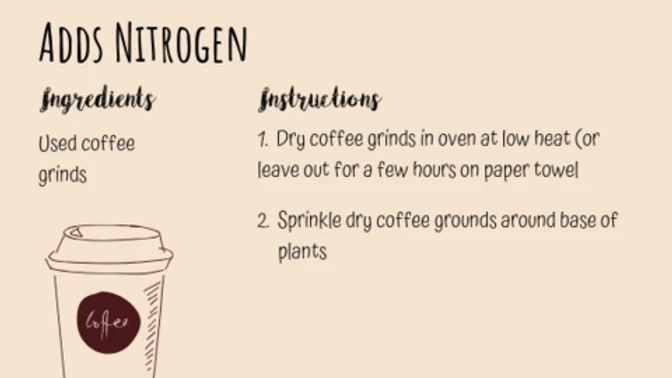
Coffee grinds are an excellent source of cheap n’ easy nitrogen. They are also a pest-repellent and a decent material for mulching.
* Warning: If you have pets, mix the coffee grounds into the soil to avoid your critters getting a toxic caffeine rush.
2.
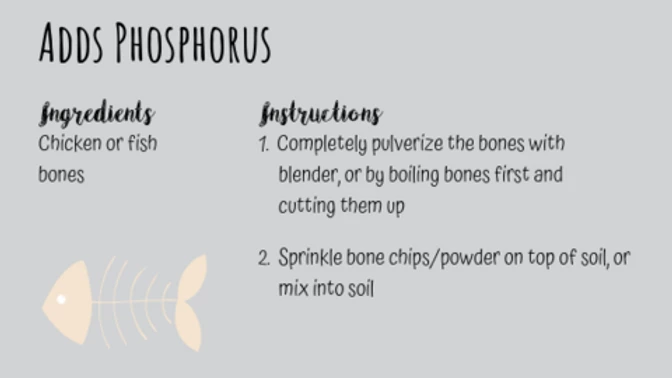
That’s right - not only are those chicken bones great for making a broth full of healthful nutrients for your body, they’re quite the power-packed addition to your soil!
* Warning: If you have pets, make sure to completely and absolutely pulverize those bones and mix the powder into the soil to avoid a pricey trip to the vet.
Note: Don’t have a blender, but want to pulverize those bones to the nth degree? Try this method.
3.
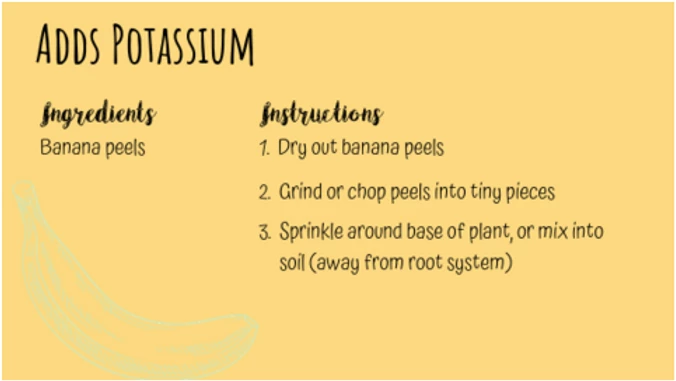
Ah, potassium. The best excuse to eat bananas we’ve ever known.
Both the fruit and the peels of bananas are chock-full of potassium. While you may not want to waste a tasty ‘naner on your garden, you probably also don’t want to chew on the peel for the next thirty minutes. Luckily, there’s a happy medium for both you and your garden.
There are multiple ways you can extract the nutrients from a banana peel. You can blend it up and dig it into your soil; you can soak it for a few days to create a “tea” to spray on your plants; or, you can just dig a peel into your garden near the roots of the plants you’re trying to nourish.
However, for the most well-rounded application, we do recommend drying and grinding, both to avoid unwanted visitors (flies, raccoons, possums) and to quickly and efficiently deliver the desired nutrients to your plants’ root systems.
Note: If your compost, green bin or homemade fertilizer is attracting pests, you may want to learn these three tricks to minimize “home invasions”.
* Warning: Too much phosphorus might lead to deficiencies in other nutrients, as it can stop your plants from absorbing these elements (like zinc, iron or calcium) even if these elements are already present in the soil.
Chapter Two: Micronutrients Need Love Too!
While synthetic fertilizers and a good number of organic fertilizers focus undue attention on NPK ratios, the micronutrients required by your plants can sometimes be left by the wayside.
Too much of one thing might very well lead in a deficiency in another (or a few others) and might mean you need to spend time and energy reinforcing your garden with a host of other amendments just to keep it up to scratch.
Here are some of the easiest ways to ensure that your garden gets all of the 11 elements it requires for continued health and bounty.
4.
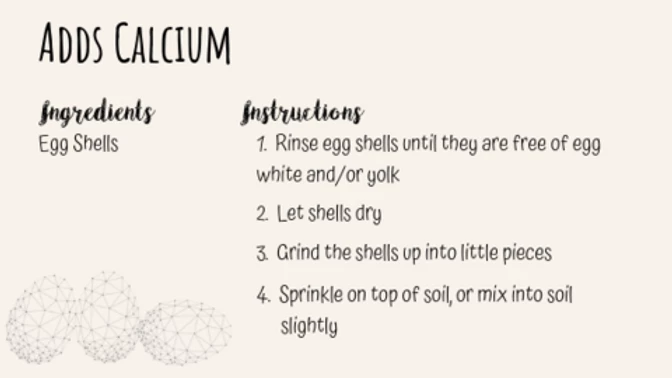
Next time you make an omelette, save those shells for your garden.
By drying and grinding the shells into a fine powder, you’re ensuring that your garden gets all the calcium it could possibly need with the scraps from breakfast - not a bad tradeoff!
5.

The more the merrier! If you have any powdered milk in your pantry that you purchased that one time two years ago, well, put it to work!
6.

Epsom salts are the primary source of magnesium sulfate, an important mineral for both the body and the soil. Magnesium has various roles, but the primary one is to assist in the creation of chlorophyll during photosynthesis.
* Warning: Don’t oversalt! Too much magnesium might lead to a deficiency in calcium or potassium, and might also acidify your soil beyond healthy acidity levels.
7.
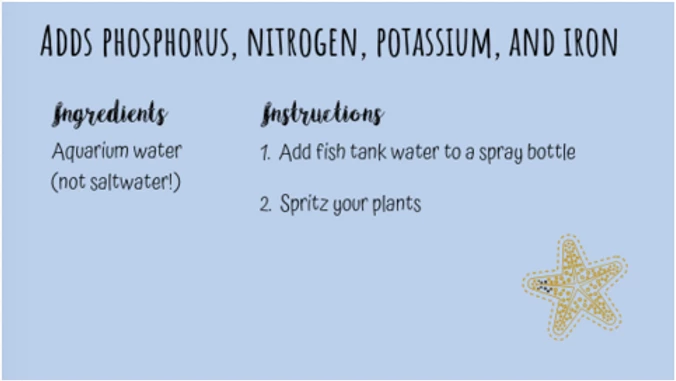
If you have fish you’ve probably noticed that, once in a while, that water gets a little gnarly. Sure, that means you’re going to have to clean it at some point soon, but it also means that your fish are giving you a phenomenal fertilizer, free of charge. Thanks guys!
Aquarium water is an amazing all-around fertilizer, and can be spritzed directly onto your plants, or poured into the soil via watering can.
8.

While Borax is bad news for ants (just Google “ant problem” and you’ll get a host of results with borax in the title), it’s actually quite good for your soil - in limited amounts.
Boron deficiencies are hard to pinpoint, as it’s such a small percentage of your overall soil nutrient make-up. Chlorosis (yellowing of leaves) is a symptom of insufficient boron, as is a large ratio of spindly, brittle stems.
9.

Remember a few years ago, when everyone was munching away on kelp snacks?
Dried seaweed is an all-around great addition to your soil. Further, seaweed is plant matter that doesn’t need to decompose in your soil, so you won’t run the risk of critters being attracted by the smell. Plus, you get a pretty tasty snack in the bargain!
10.
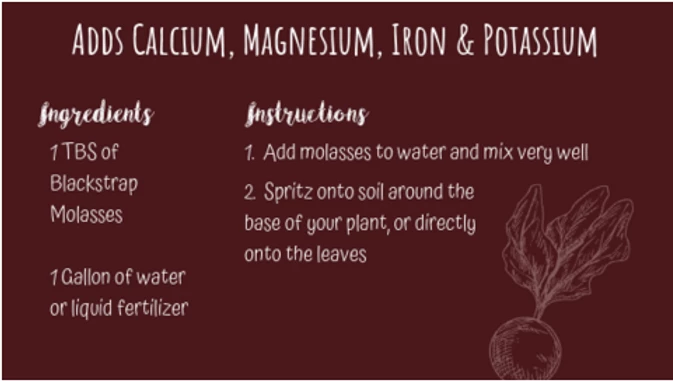
Molasses is a product of sugar-beets, which are rich in nutrients (thank goodness, because molasses on toast is pure bliss).
Almost every house has molasses sitting somewhere in a dusty corner. It’s just one of those household staples that you end up forgetting about. Might as well make use of it!
11.
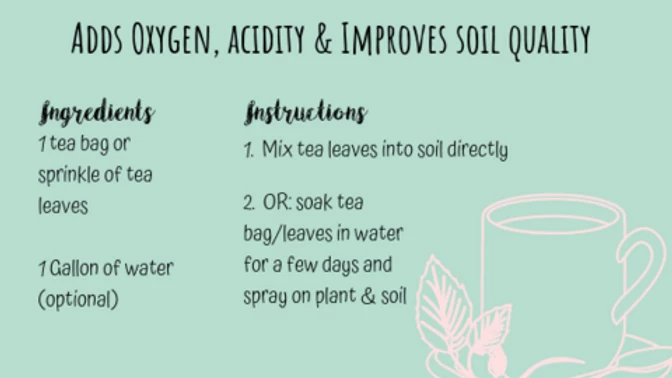
You’ve probably heard about the wonders of tea on human health. Well, it ain’t too shabby for your plants, either.
Tea leaves are full of antioxidants. They also contain tannic acid which helps make your soil a much more fertile environment for your plants. Also, as an organic material, they help build the texture of the soil so that your plants get the water and the nutrients they need, easier.
Chapter 3: pH Problems
To keep things simple: if your soil is balanced (or as close to pH neutral as possible), your garden will be much healthier overall than if your soil teeters one way or the other.
Your soil pH is measured on a spectrum of 1 -14, with 7 being perfectly neutral. As a benchmark, remember that proper compost is measured as 7 on the pH scale - or at least very, very close.
If you don’t want to risk your garden’s health while you wait the few weeks for your compost to cure, there are a couple of stop-gap measures to bring the soil back to neutral territory.
12.
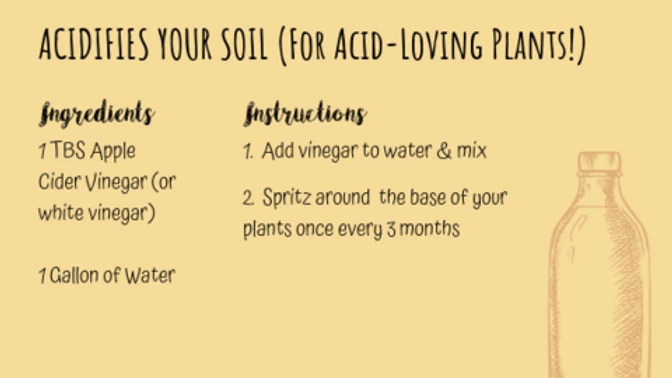
So, acid is not technically a specific nutrient in your soil, but it is massively important for your garden to have a balanced pH.
Acid-loving plants such as blueberries, tomatoes, rhododendrons, roses and other big n’ bright types will really benefit from a spritz of vinegar.
13.
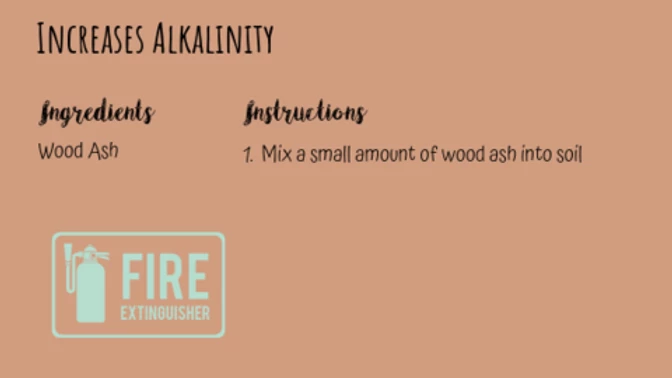
As a contrast to acid-producing fertilizers, you may want to think about guiding your soil to a more alkaline pH. This is prudent if you’re trying to grow asparagus or artichoke (among a host of other alkali-loving plants) with little success.
Wood ash is an easy replacement for lime, which is a common fertilizer in agriculture and helps balance pH in soil, while adding magnesium and sulfur.
Note: If you happen to be Canadian, and you happen to have the legally allotted amount of marijuana plants in your home - these can be useful too! Use the old stalks as an easy homemade mulch, perfect for when it's time to bid those old plants goodbye. Easy-peasy!
A Healthy Balance
Here’s the thing: you can supplement your soil with fertilizer all you want, but it still won’t offer your garden the same benefit as simply starting a compost pile or using an indoor electric composter and using the nutrient-rich by-product as a soil amendment.
Fertilizer are supplements for quick-release nutrients. Compost provides a more long-lasting and holistic - albeit slower - form of nutrient release. This is because the food in the compost is still undergoing the break-down process, and will continue to break down in the soil once added to your garden, therefore releasing nutrients over time.
Compost also has a nearly perfectly balanced pH, which will help balance your soil, and make it much easier to grow a bountiful garden.
That being said, if you’d rather not wait around for your compost to cure, you can always use the above fertilizer recipes to perk up your plant babies in a pinch.
Note:Want the best of both? An electric composter might be the way to go. You can turn all food scraps into a nutrient-rich soil amendment, all within a few hours.
Source: https://www.foodcycler.com/post/homemade-fertilizer-13-organic-recipes-for-your-garden




